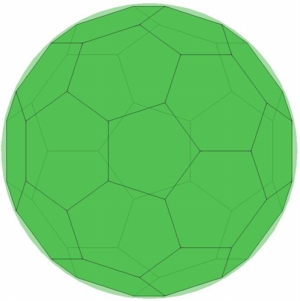|
|
School of Mathematics Scientific Computing Center |
We study four different methods for distributing points on the sphere and numerically analyze their relative merits with respect to certain metrics. The analysis of the merits of the algorithms is based on the calculation of the metrics V0 and V1 . Given points z1, ... , zN on the sphere S2 of unit radius we set
Vs = Vs(z1, . . . , zN)
=

where s>0 is a positive real number and |zj - zk| denotes the distance in R3 of zj and zk . The metric V0 = V0 (z1, . . . , zN) is more appropriately defined for points on the sphere S2½ of unit diameter and is defined as
V0 =

Here also |zj - zk| refers to the distance of zj and zk in R3 .
For each s≥0, the configuration of the points achieving the minimum of Vs, in some sense, forms "evenly" distributed points on the sphere. For example, an equilibrium sate of N electronic charges on a sphere produces minimum Coulomb potential, V1 . We have investigated some practical methods by which one can obtain an approximate optimal configuration of points without any explicit practice of minimization methods. Refer to the paper for more details about these methods.
 |
 |
 |
 |
|
N=4, Tetrahedron |
N=5 |
N=6, Hexahedron |
N=7 |
 |
 |
 |
 |
|
N=8, Twisted Cube |
N=9 |
N=10 |
N=11 |
 |
 |
 |
|
N=12, Icosahedron |
N=32 |
N=42 |
 |
 |
|
N=60, Triangulated Form |
N=60, Buckyball |
3D data of optimal configuration of
Coulomb potential in VRML format.
4.wrl, 5.wrl, 6.wrl,
7.wrl, 8.wrl,
9.wrl, 10.wrl, 11.wrl,
12.wrl, 32.wrl,
42.wrl, 60.wrl,
buckyball.wrl.